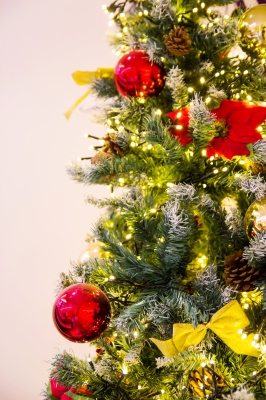During the holidays, most families prefer to gather around the table, not a hospital bed. Sadly, residential fires, which are prominent in winter months, can wreck havoc on your home and severely inure your loved ones.
As the temperature drops, heaters, candles and holiday decorations all contribute to the 47,000 house fires that occur each year. Once that fire breaks out, you statistically only have about two minutes to escape.
Fortunately, an annual assessment of your chimney’s structure and integrity can save your home and your holiday from a fire. Below we’ll cover a bit more about the inspection process, and outline a few more ways to prevent house fires this holiday season.

National Fire Protection Association Recommendation
We professionally recommend an annual inspection to every homeowner with a chimney. Even if unseasonably warm winter temperatures prevent it from getting much use, an inspection is still in order.
It’s a recommendation we share with organizations like The National Fire Protection Association Standard 211 which states, “Chimneys, fireplaces, and vents shall be inspected at least once a year for soundness, freedom from deposits, and correct clearances. Cleaning, maintenance, and repairs shall be done if necessary.”
What Is Involved During a Chimney Inspection?
Our professional chimney inspectors have been extensively trained to help prevent property losses and loss of life. As they complete their thorough review of your chimney, they’ll assess for any potential damage and make recommendations on any necessary chimney repairs.
Don’t wait until an unforeseen issue creates costly damage, or worse, causes your home to catch fire. Let us conduct a chimney cleaning complete with a full safety inspection. During our visit, we’ll look at everything from your chimney cap, damper, and mortar + brick, to the firebox, and flashing.
Our technicians also follow a strict 15-point checklist of inspection criteria, checking for:
- Chimney cap and crown defects
- Creosote or heavy soot
- Abandoned or hidden chimney thimble ports
- Cleanliness
- Damaged, blocked, or unsafe chimney flues
- Dead end flues
- Fireplace inserts for wood or coal installed into an existing masonry flue
- Missing chimney cleanout doors
- Movement in chimneys
- Orphaned gas-fired water heaters
- Rusted or damaged chimney or fireplace components
- Support defects
- Unlined chimney flues in single-brick wythe chimneys
- Un-sealed flue-vent connectors at chimney thimbles
- Unsafe fire clearances
What Else Can You Do to Prevent Holiday Fires?
- Remember the three foot rule. Anything that could possibly catch fire, inanimate objects like holiday decorations plus children and pets alike, need to remain at least three feet away from heat sources.
- Always monitor open flames. Ensure active candles, fireplaces and stoves are never left unattended.
- Test + replace smoke detector batteries. Repeat this process every six months– same goes for carbon monoxide detectors.
- Check holiday decorations. Carefully look over holiday light strands. Any that have exposed wire should be tossed immediately.
Regardless of how often you use your chimney, ensure a professional looks it over each year to prevent injury or property loss. Unlike a trip to the ER, the gift of health and safety won’t cost you a thing.
This holiday, spend your money on friends and family, not hospital visits. Contact us to book your chimney sweep with a full chimney inspection before winter has your fireplace working overtime!

0 responses to “Why An Annual Chimney Inspection Could Save Your Holiday”